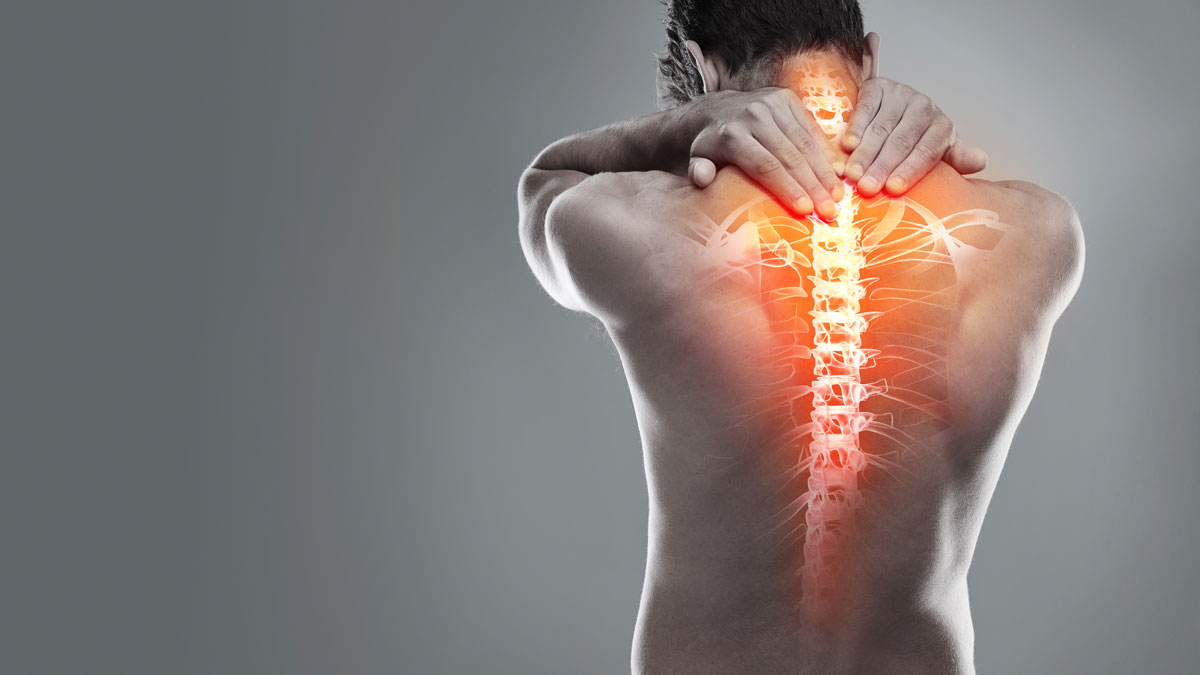Massage Therapy Journal
Massage and Trigger Points
Learn what trigger points are and the benefits massage therapy can provide for clients in pain.
Learn about ways to identify trigger-point patterns in the serratus posterior superior and tips for treating the area.
by David Kent, LMT, NCTMB
August 1, 2009

Trigger points in the serratus posterior superior frequently cause pain near or under the shoulder blades, or in other regions throughout the upper extremities. This article will discuss ways to identify trigger-point patterns in the serratus posterior superior, as well as provide tips for treating the area.
Symptoms: Pain from the serratus posterior superior is often described as a constant "deep ache" under the upper portion of the scapula.
Pain can extend down the posterior aspect of the shoulder and arm to the ulnar side of the forearm, hand and little finger. It sometimes manifests as numbness into the C8-T1 distribution of the hand.
The pain often increases when the client performs movement that causes the scapula to press against the trigger points of the serratus posterior superior, which includes lifting objects with outstretched hands, such as placing dishes or other objects on a shelf. Sleeping on the same side can also cause the scapula to press against the trigger points.
To determine if the serratus posterior superior is involved in producing a client's pain, therapists need to make use of the tools at their disposal, including intake forms, questionnaires, postural analysis, trigger-point charts and physical assessment. Once it has been determined that serratus posterior superior is involved, you will be able to develop a treatment plan.
Common causes of trigger points in the serratus posterior superior muscles include illness and certain movements and postures. According to Simons and Travell, "Trigger points in the serratus posterior superior muscles are activated by overload of the thoracic respiratory effort because of coughing ... and by paradoxical breathing (use of diaphragm and abdominal muscles out of phase)."1
Trigger points in the region can also be brought on by poor movements and postures caused by "sitting for long periods writing at a high desk or table, where the shoulders are elevated and rotated forward to permit the arms to reach the high surface; repeatedly reaching to the rear of a high work surface ... and protrusion of the thorax against the scapula by scoliosis," among other things.1 However, "scalene trigger points may mimic, in part, the pain pattern of the serratus posterior superior. The neck should always be examined for scalene trigger points if a trigger point is found in the serratus posterior superior."2
The serratus posterior superior is cover by two layers of muscle. The superficial layer is formed by the trapezius. The second layer is formed by the rhomboid minor that covers the upper half of the serratus posterior superior and the rhomboid major that covers the lower half.
The serratus posterior superior attaches at midline to the lower portion of the ligament nuchae, the spinous processes of the C6-T2 vertebrae and the intervening interspinous ligaments. The muscle fibers run at an approximately 45-degree angle, inferiorly and laterally, to attach on the second to fifth ribs. The lateral portion of the serratus posterior superior is covered by the scapula.
The serratus posterior superior also crosses over two muscles of the erector spinae group: the longissimus thoracis and iliocostalis thoracis. Some describe the serratus posterior superior and serratus posterior inferior acting as retinacular tissue directly superficial to the erector spinae. Functionally, this would help increase the force generated by the erector spinae.
The serratus posterior superior raises the ribs and subsequently expands the chest, aiding in respiration.
Other muscles that act synergistically with the serratus posterior superior include the scalenes, diaphragm, intercostals and levator costae muscles.
Palpating any trigger points or taut bands of tissue in the serratus posterior superior muscle may be difficult because it is covered by skin, adipose, and the trapezius and rhomboid muscles. If referred phenomena like pain, burning or tingling are present, it's likely that you have located a trigger point.
Pay attention to pressure, as these areas can be painful. Clients who reflexively pull away, hold their breath or clench their teeth are acting out protective responses. In these situations, you should immediately decrease pressure, leave the area for a few minutes, then return using less pressure.
If you have applied oil or lotion, your fingers will slide when attempting to apply a friction technique. Place a tissue or linen on the skin first before applying the technique through the tissue. Treat the muscle attachments at midline along the lateral aspects of the spinous processes from C6-T2.
To work the muscle attachments on the second to fifth ribs, abduct the scapulae and move it laterally to uncover the entire serratus posterior superior. Use fiber and cross-fiber friction movements to release the rib attachments. Apply lubrication and glide on the muscle belly using multidirectional movements to ensure thorough treatment.
Postural analysis photos can help display stresses on the muscle from poor posture and help your client better understand why they're in pain. Use trigger point charts to show pain referral patterns, especially those that display the muscles in columns, superficial to deep. This makes it easy to show clients the layers of muscle you must work through to address the condition.
Review proper breathing techniques with clients and become familiar with their activities of daily living. Additionally, talk to clients about proper ergonomics so they can prevent the perpetuation or return of their symptoms.